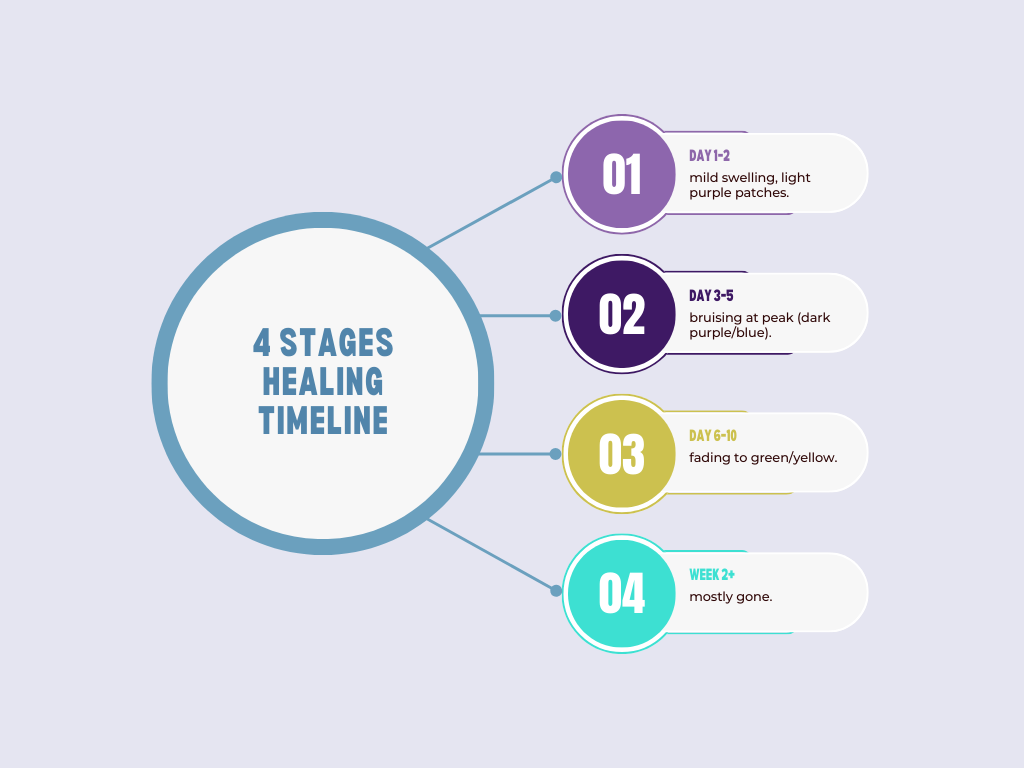Bruising after a vasectomy is extremely common, in fact, most men notice some purple or blue discoloration in the first few days. The scrotum is a delicate area with lots of blood vessels, so even a tiny amount of bleeding under the skin can cause dramatic color changes.
While the sight can be alarming, bruising is usually harmless and part of the normal recovery process. This guide explains what’s considered normal, when to be concerned, and how to ease discomfort.
Why Does Bruising Happen After Vasectomy?
During a vasectomy, small blood vessels in the scrotum may be stretched, pinched, or broken. This can lead to subcutaneous bleeding (bleeding under the skin) that appears as purple, blue, or even black patches.
Factors that increase bruising include:
- Procedure type: Scalpel techniques may cause slightly more bruising than no-scalpel.
- Activity too soon: Standing, walking, or lifting in the first few days can worsen bruising.
- Blood-thinning meds: Aspirin, ibuprofen, or anticoagulants may make bruising more pronounced.
- Individual healing: Pale or thin skin often makes bruises more visible.
What Normal Bruising Looks Like
Typical post-vasectomy bruising may include:
- Purple or blue patches on the scrotum.
- Discoloration spreading to the base of the penis or inner thighs.
- Peak intensity around day 2–5 after the procedure.
- Gradual fading to green/yellow before disappearing in 1–2 weeks.
It’s not unusual for the whole scrotum to look purple it may look worse than it feels.
When to Worry About Bruising
Most bruising is harmless, but you should call your doctor if you notice:
- Severe swelling: Scrotum enlarges to the size of an orange or grapefruit.
- Hard, tense scrotum: Could indicate a hematoma (large blood collection).
- Rapidly spreading bruising: Expanding quickly instead of slowly fading.
- Fever, redness, or warmth: Possible infection.
- Intense or worsening pain: Pain should improve gradually, not get worse.
These signs may point to a complication and should be evaluated promptly.
Tips to Manage Bruising After Vasectomy
- Rest: Limit standing or walking in the first 48 hours.
- Ice packs: Apply for 10–15 minutes at a time, especially in the first two days.
- Supportive underwear: Briefs or compression shorts reduce strain and movement.
- Elevate when resting: Lying down helps reduce pressure and swelling.
- Avoid strenuous activity: Wait at least a week before heavy lifting, cycling, or running.
How Long Does Bruising Last?
Most bruises resolve within 1–2 weeks. Discoloration often looks worse before it looks better, purple turns to blue, then green or yellow as the blood under the skin breaks down and is reabsorbed.
If bruising persists longer than 3 weeks or is accompanied by swelling, pain, or fever, follow up with your doctor.
Bruising vs. Hematoma: What’s the Difference?
Bruising is discoloration under the skin and usually harmless. Hematoma is a larger collection of blood that causes the scrotum to swell, feel firm, and sometimes become very painful. Hematomas may require drainage or surgical review.
Learn more in our guide: When Vasectomy Complications Happen: What to Do Next.
Final Thoughts
Bruising after vasectomy is common and usually nothing to worry about. Even dramatic purple or blue discoloration typically resolves on its own. The main concern is how you feel, if swelling, pain, or fever appear, don’t hesitate to contact your provider.
Want to know what else to expect during recovery? Check our Vasectomy Recovery Timeline (2025) for a day-by-day guide.

